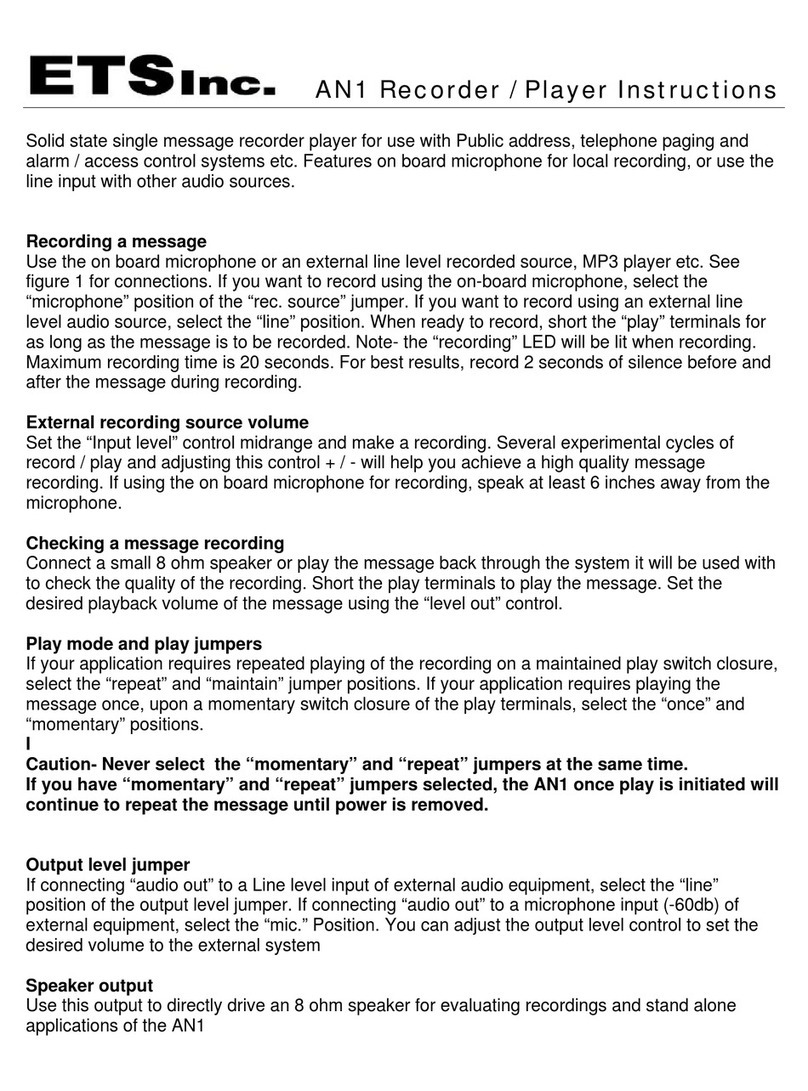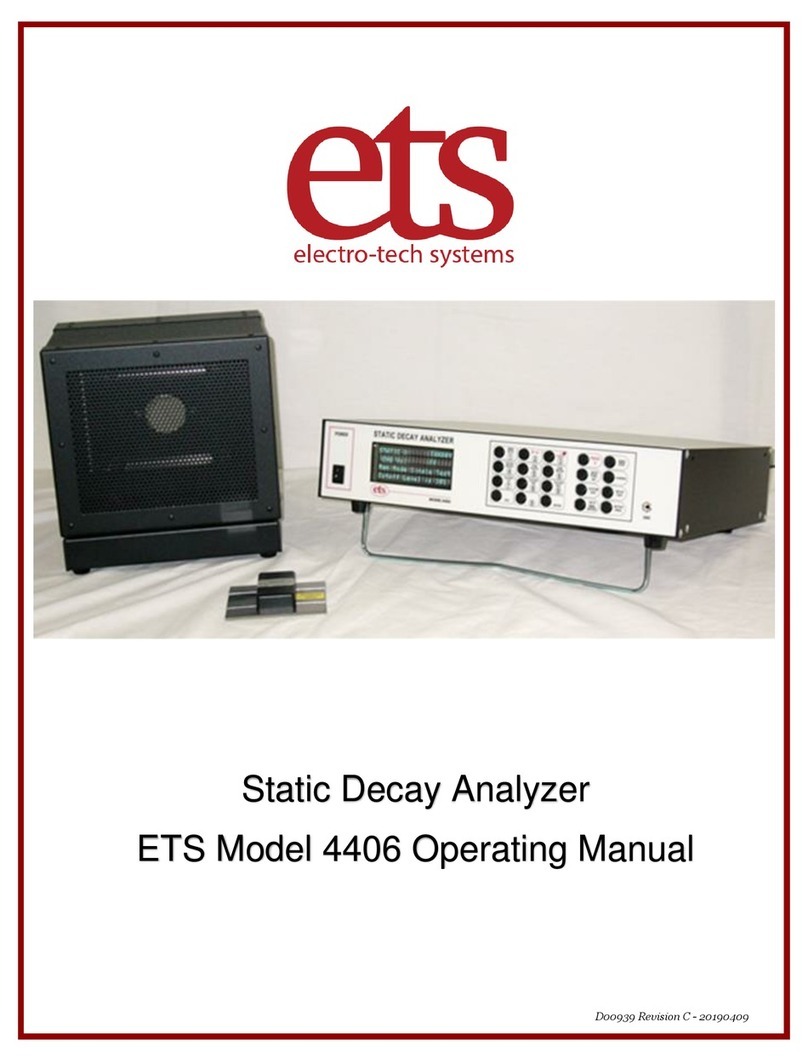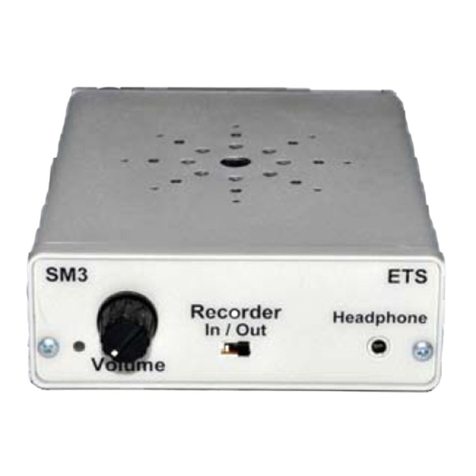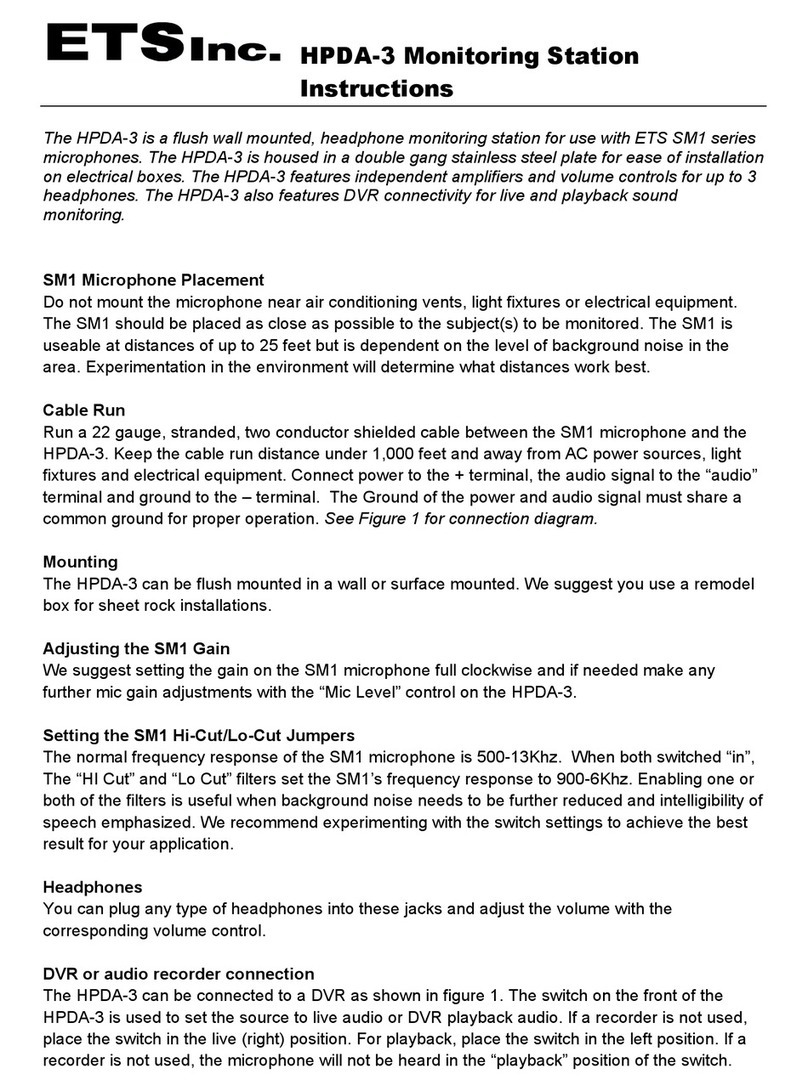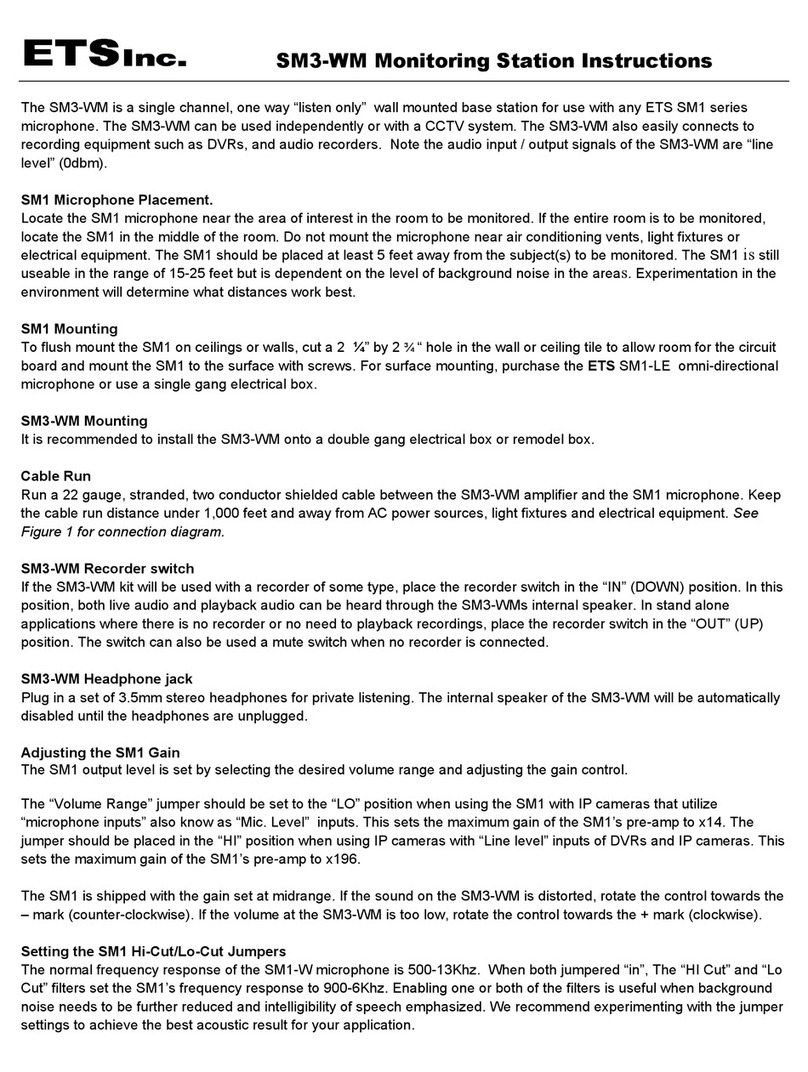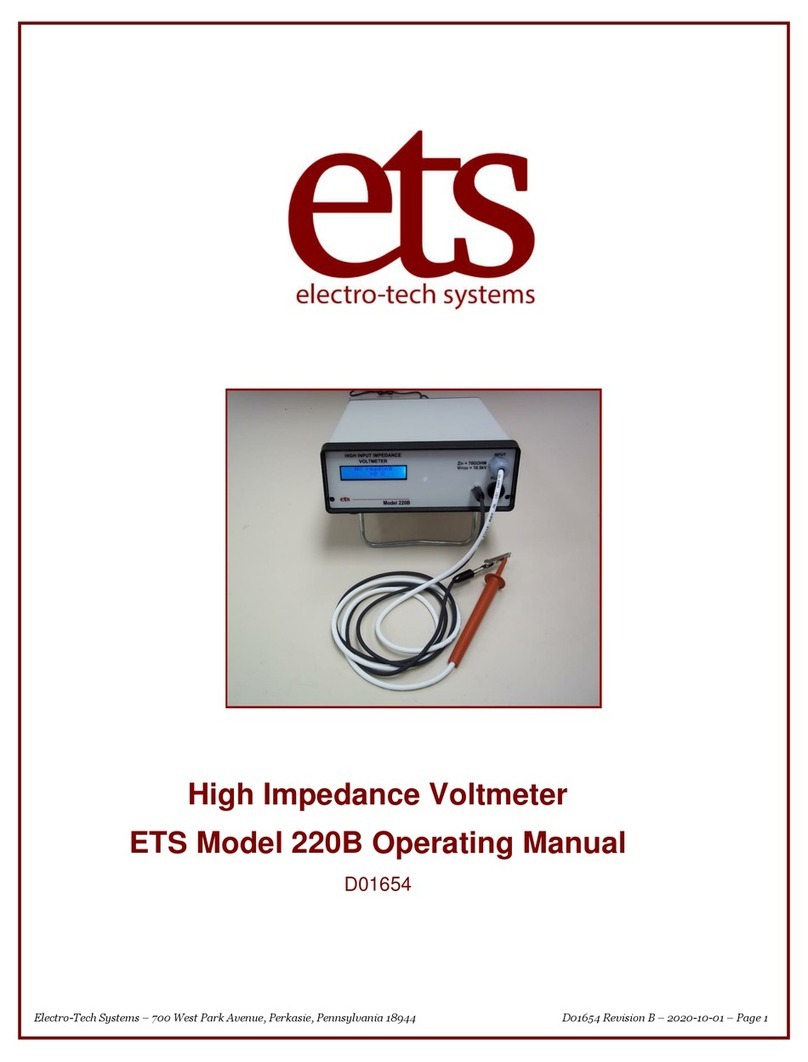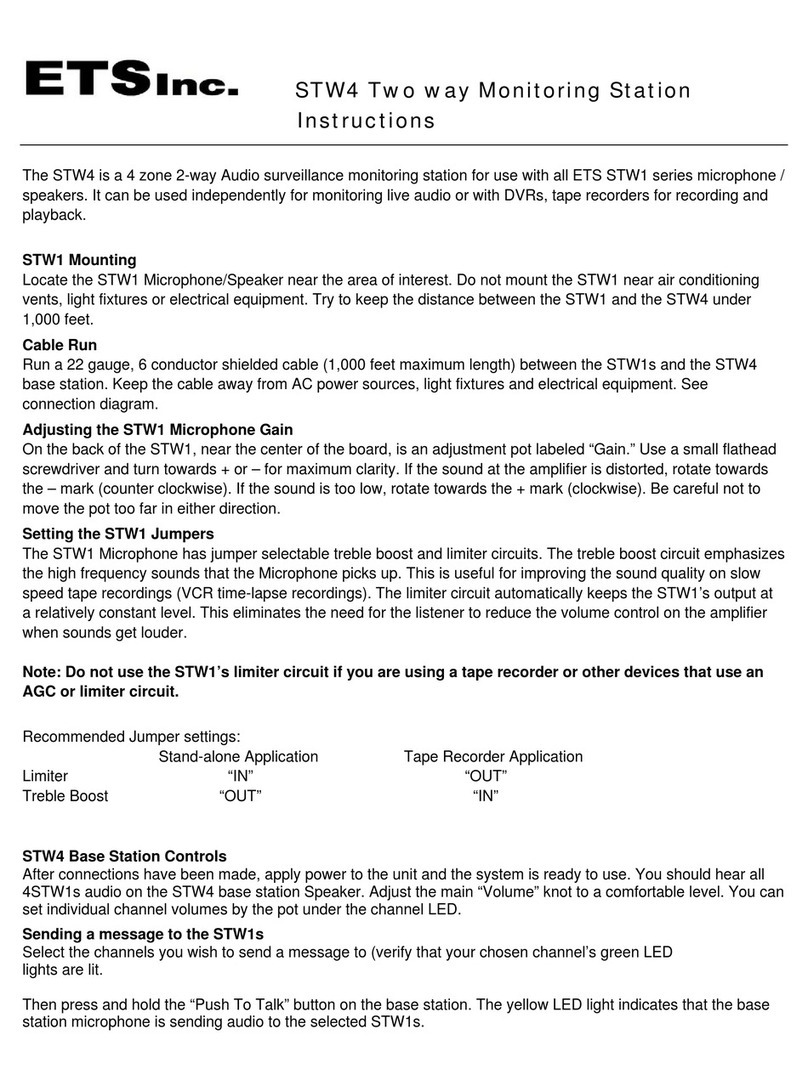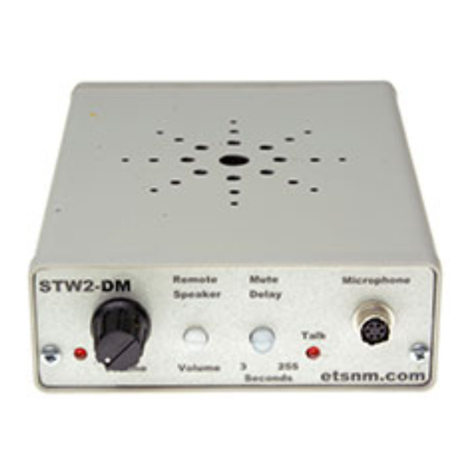
3
Applying 2000 Volts to the plate surface of the standard Model 205C will
indicate full scale on the Static Meter (divide meter reading by 10. A meter
reading of 20.00 kV indicates 2 kV on the plate). The standard Model
205C also has 20 pf capacitance specified in ESDA STM3.1 required for
ionizer decay time measurements. It is designed for high resolution (±1 V),
low voltage applications usually found in ESD controlled areas. An
optional 6”x6” (152x152mm) square detector plate attaches to the
1”x3”(25x76mm) Model 205C detector plate to provide full size charged
plate monitor measurement capability. System drift is less than 2
Volts/second.
Note: If the Model 205C is used to measure ionization decay the rate will
be approximately 10 times faster with the 6x6” (152x152mm) plate. This is
a result of the area of the larger plate being approximately10x larger than
the smaller plate.
2.2.2 Model 205C-x10
The Model 205C-x10, shown in Figure 2.2-2, is designed for
measurements up to a maximum of 20kV. Applications include static
propensity and static charge generation in non-ESD controlled areas such
as office buildings, factories, conveying systems etc. This unit does not
have the specified 20pF capacitance since it is not intended to measure
ionizer decay time. The detector plate is covered by a plastic cover to
reduce electrostatic shock to the operator.
3.0 OPERATION
To utilize the Static Meter as a field measuring instrument only, simply depress the push
button and bring the Meter towards the surface being measured. At a distance of 1 inch
(25mm), read the magnitude and polarity. Depress the MEASURE/HOLD button again
(Red LED on) to hold the reading. All measurements are normally referenced to the
potential of the user, which may or may not be at ground. To obtain a solid ground
reference, connect the Meter to ground using the supplied ground cable connected to
the snap located on the bottom of the Meter.
To convert the Model 212 to a charged plate monitor, attach the either the standard
Model 205C or the Model 205C-x10 Charged Plate Detector to the front of the Static
Meter as shown in Figure 3.0-1. Slide the Charged Plate Detector over the front of the
Static Meter and snap in place. The Model 212 ground cable can now be connected to
the Model 205C ground snap if desired. To measure charge generated by any activity,
connect a probe, wrist strap or other appropriate connection to the detector plate jack.
Ground the detector plate momentarily then activate the Static Meter. Any voltage
generated will be transferred to the plate and be measured by the Static Meter.
NOTE: Static charges on insulators cannot be transferred to the charged plate by wire.













